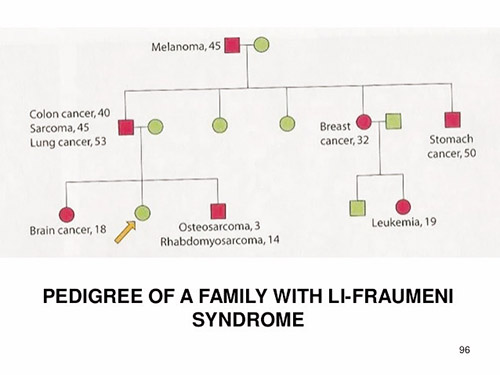
Fred Li was born in Canton, China, one of five sons of a prominent World War II Chinese general. In the aftermath of the war, his father became minister of the interior under Chiang Kai-shek, but with the Communist takeover, his parents decided to come to America when Fred was 7 years old, and they opened what became a very successful Chinese restaurant, the China Garden, in White Plains, New York—the restaurant is still operating today. Li and his siblings all worked there as teenagers, but ultimately he went to New York University as an undergraduate and then to the University of Rochester Medical School. He later joined the epidemiology branch of the National Cancer Institute, which was headed for decades by Joseph Fraumeni, and was assigned to serve as a liaison officer at Harvard Medical School where he spent the remainder of his career.
Fraumeni was born in 1933 in Boston, went to Harvard College, then to Duke for medical school, and back to Harvard for a master’s degree in epidemiology. In 1962, he joined the National Cancer Institute and became the founding director of its branch for cancer epidemiology and prevention, a position he retained until his retirement in 1995. In this capacity, he became Fred Li’s boss.
In previous articles, we have discussed the phenomenon of clustering—the apparent increased occurrence of cancer cases within a certain population, sometimes within a geographic area or within an occupational group or within a population defined in some other way. In 1969, Li and Fraumeni published a report in the Annals of Internal Medicine identifying four large families or kindreds in which there were inordinate numbers of cancer cases, in effect constituting clusters within families. These cancers included soft tissue sarcomas, brain tumors, breast cancers, adrenocortical carcinomas, osteogenic sarcoma, leukemias and others. The majority of these individuals with cancer were diagnosed at unusually young ages, generally below the age of 45.
The reader should appreciate that these kindreds were described in an era before cancer-causing genes, like BRCA, had been identified or isolated. Thus, while the phenomenon of increased risk within families was recognized, the mechanisms were only just beginning to be understood and elucidated. A follow-up paper was subsequently published in 1988 in which the researchers described 24 families with a similar constellation of cancers within them. As these families were observed going forward in time, their members developed new cancers at a rate that was more than 20 times the rate that would be observed in the general population.
P53 is a tumor suppressor gene located on the short arm of chromosome 17. Alteration and mutation of this gene is the most common genetic defect that is known to occur in human tumors and has been found in association with many sporadically occurring malignancies. However, the germline hereditary genetic transmission of a p53 mutation is a very uncommon occurrence. In 1990 it was determined that with Li-Fraumeni syndrome, these hereditary cancer families were characterized by the presence of these p53 mutations.
It is estimated that 50% of p53 mutation carriers will develop cancer by age 40 and 90% by age 60, so it is a highly penetrant gene. It is an autosomal dominant gene, so only one parent needs to transmit the gene defect to the offspring.
To date, about 1,000 multi-generational Li-Fraumeni families have been identified worldwide. There does not appear to be any known racial or ethnic predominance in terms of distribution, though there is a high prevalence in southern Brazil. This seems to be the result of a common ancestor who immigrated many years ago from Portugal. This is known as a founder effect. Similar founder effects are responsible for the high rates of the BRCA mutations among Ashkenazi Jewish populations.
Luckily, Li-Fraumeni syndrome itself is very uncommon and thus not a major public health or medical problem. Its chief interest lies in the fact that it served as the first of the high penetrance genetic syndromes to be identified that stemmed from tumor suppressor genes and thus the lessons learned in its evaluation were later extrapolated to such more common disorders, such as BRCA and familial adenomatous polyposis syndrome.
Li was a very compassionate and ethical individual in addition to a brilliant scientist. He founded a clinic in Boston’s Chinatown for poor Chinese immigrants, where he frequently worked at night and would accept no compensation.
Alfred I. Neugut, MD, PhD, is a medical oncologist and cancer epidemiologist at Columbia University Irving Medical Center/New York Presbyterian and Mailman School of Public Health in New York. Email: [email protected].
This article is for educational purposes only and is not intended to be a substitute for professional medical advice, diagnosis, or treatment, and does not constitute medical or other professional advice. Always seek the advice of your qualified health provider with any questions you may have regarding a medical condition or treatment.













